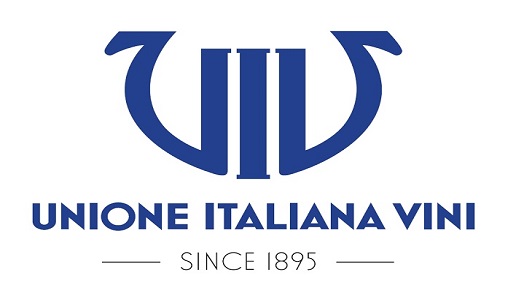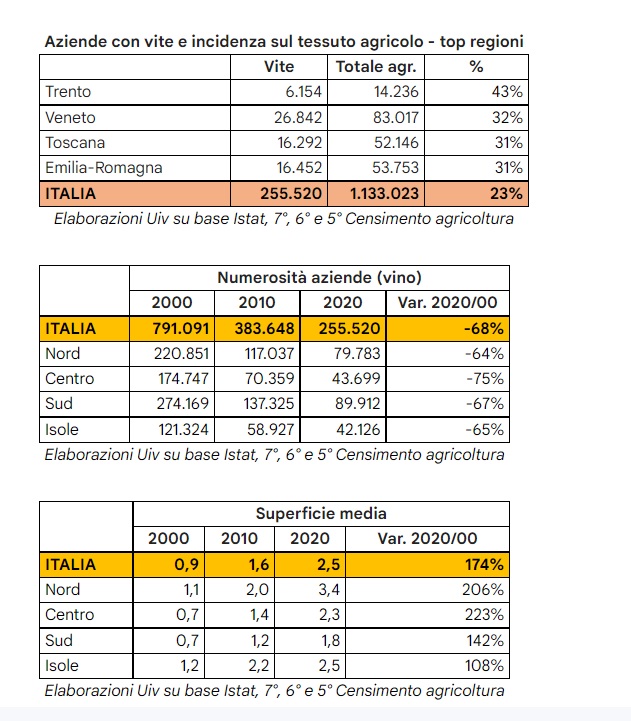UIV: In 20 years fewer companies (-68%) but more structured, +174% average area per company

In 20 years, our country's wineries have shrunk by more than 500,000 units, but the area under vines has held (-11%, with -1% in the last decade) and the 255,000 remaining wineries (there were 791,000 in 2000) are now more structured, with the average area of hectares under vines growing by 174%.
This is noted by the Observatory of the Italian Wine Union, which processed, with a vertical on wine, the latest agricultural census of Istat updated to 2020. A morphological revolution, necessary according to
Uiv, of the Italian vineyard and its companies that in 20 years have increased the value of exports by 165 percent, becoming the first agricultural sector in foreign trade and among the main proponents of the trade surplus of the total made in Italy, where it accounts for almost 14 percent. For the president of the Italian Wine Union, Lamberto Frescobaldi: "Italy is progressively structuring its wine businesses in respect of production varieties, which are the real wealth of our wine. The road is the right one, even if there is still a long way to go to come close to the average surface area of our main competitors, such as Australia, the USA and New Zealand or, closer to us, of a France that has an average size per company 5 times larger than ours."
Compared to twenty years ago, the number of farms has declined most noticeably in the Center (-75 percent), with above-average trends also in the Northwest (-70 percent). Among the regions, Campania - which boasted the largest number of firms (86,000) in 2000 - now has just over 22,000 with a 74 percent drop; even greater reduction in Lazio (-83 percent). According to the latest Istat census, it is Puglia that has the largest number of enterprises (36 thousand), followed by Sicily (30 thousand) and Veneto (27 thousand).
Fewer companies but with larger plots on average, especially in the North, where the average vineyard area is 3.4 hectares, compared to a national average at 2.5 (it was 0.9 in 2000 and 1.6 ten years later). Looking at the area planted with vines, the peaks are in Friuli Venezia Giulia (5.5 hectares), then, 4 in Lombardy 3.8, in Veneto (which has the highest growth: +295%), 3.6 in Tuscany, 3.4 in Piedmont. According to UIV, there are 255,000 wineries, accounting for 23 percent of the total 1.1 million agricultural enterprises surveyed by Istat. In the special ranking by wine incidence on total enterprises, Trentino wins with an impact of 43 percent, followed by Veneto, at 32 percent, and Tuscany and Emilia-Romagna (31 percent). Also well above average are Friuli-Venezia Giulia, Abruzzo, Campania, Umbria and Marche.


 Italiano
Italiano







